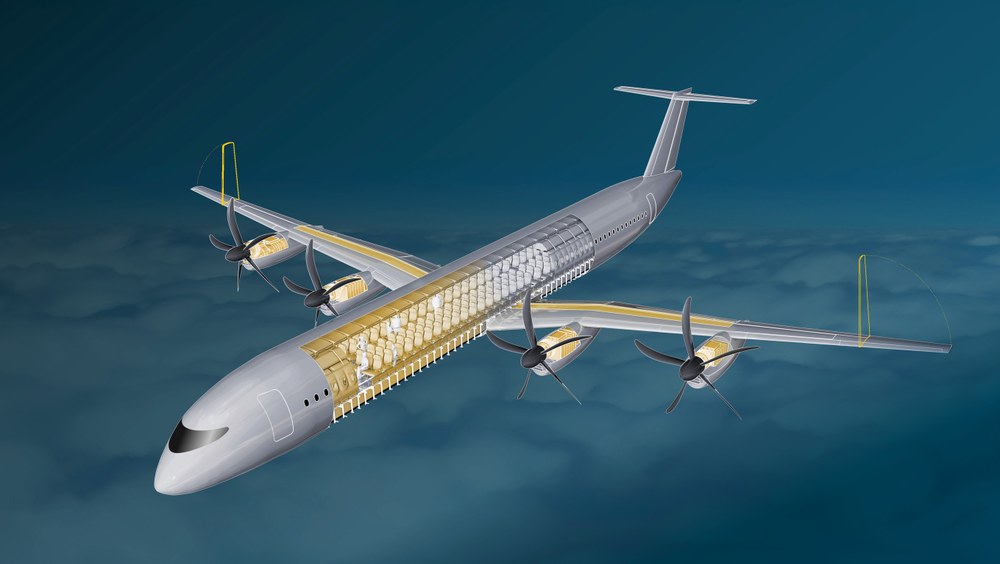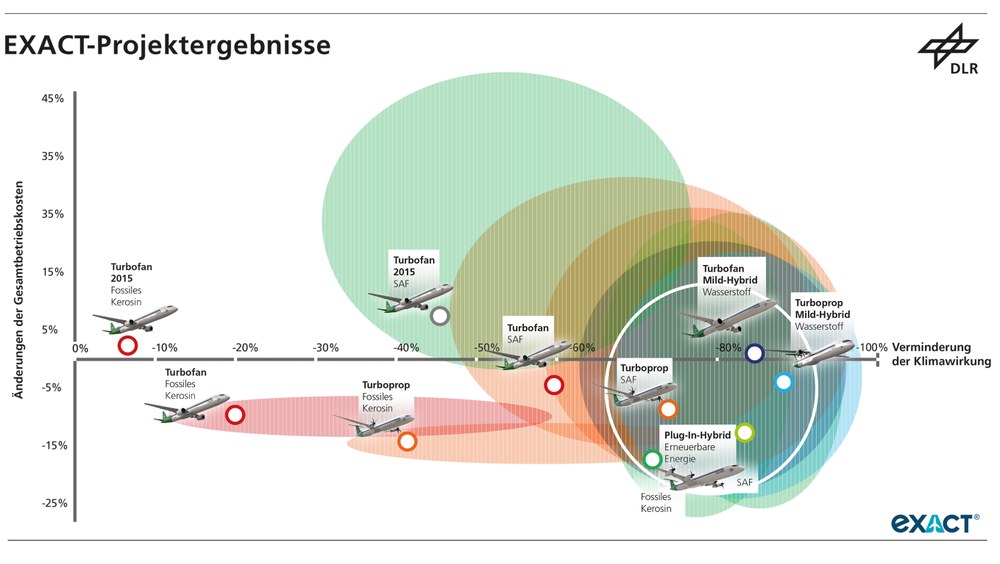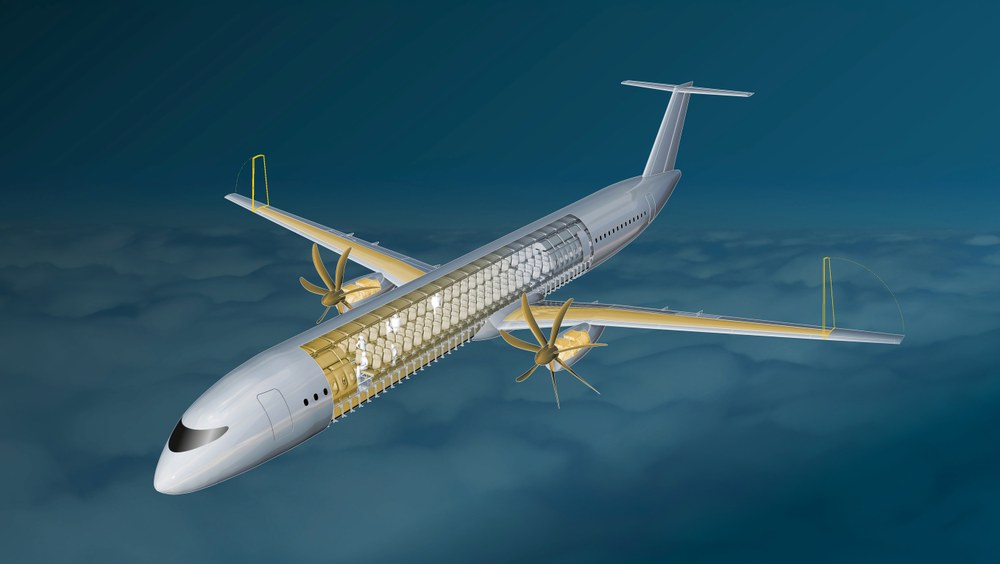DLR showcases aircraft configurations of the future



- New aircraft configurations that are both climate-friendly and economically competitive have emerged from DLR research.
- Analyses have considered the entire lifecycle of the aircraft as well as the chain of production and use of renewable fuels.
- A follow-up project will deal with the more detailed design of the most promising configurations.
- Focus: Aviation, climate-friendly flying
For four years, 20 research institutes from the German Aerospace Center (Deutsches Zentrum für Luft- und Raumfahrt; DLR) have been working together on the EXACT (Exploration of Electric Aircraft Concepts and Technologies) project to design low-emission commercial aircraft. The results show it is possible to significantly reduce the climate impact of air transport, while remaining economically competitive. The results were presented during the EXACT Public Days on 7 and 8 May 2024, attracting 170 participants from industry and research to the DLR site in Hamburg-Finkenwerder. The analysis considered the climate compatibility of new aircraft configurations, comprehensively taking into account the entire lifecycle of the aircraft, along with the process of extracting, transporting and providing renewable fuels. This integrated approach enabled researchers to pinpoint configurations with the greatest ecological and economic potential.
"As Europe's largest aeronautics research facility, we possess the expertise to predict new aircraft configurations in detail," emphasised Markus Fischer, DLR Divisional Board Member for Aeronautics. "Effective collaboration between all industry and research partners is crucial to efficiently tackle the major challenge of climate-compatible aviation under tight time constraints."
Björn Nagel, Director of the DLR Institute of System Architectures in Aeronautics in Hamburg, added, "The EXACT project has conducted a thorough analysis of the most promising aircraft concepts and technologies. We aim to share our findings with aircraft manufacturers, suppliers and other research institutions. Research demonstrates that the impact of aviation on the climate can be reduced by at least 80 percent without increasing costs."
Three aircraft concepts have emerged as the most promising for short and medium-haul flights, accommodating 250 passengers with low emissions and economic efficiency.
Battery hybrid drive surprisingly good
"What may come as a surprise at first glance is the fact that the battery-electric hybrid concept came out on top. Due to the high mass of the batteries and the rather short ranges, battery operation was previously considered more promising for smaller aircraft for short-haul use. However, the plug-in hybrid architecture actually makes it possible to power larger, market-relevant aircraft," says Daniel Silberhorn, head of the EXACT project. Sustainable production with a very high recycling rate and a long battery life are key ecological prerequisites. Low production costs and fast rechargeability ensure the economic viability of the aircraft. Powered by batteries, an aircraft could travel 500 kilometres, and hybrid-electric operation combined with sustainable fuels even up to 2800 kilometres.
Short-haul turboprop aircraft
Turboprop technology, already in use for regional operations, offers significant fuel efficiency at lower cruising speeds. This option is not only ecologically favourable, but also proves economically viable for airlines. With fossil fuels, these aircraft cut climate impact by over 40 percent, a figure further reduced with sustainable fuels. The aircraft in question has a range of 2800 kilometres.
Economic efficiency of hydrogen propulsion
Hydrogen-powered aircraft can slash the impact on the climate by at least 80 percent. However, their economic feasibility hinges on hydrogen and synthetic kerosene production costs. Integration of fuel cells for ground support, during descent and in the on-board systems would significantly reduce emissions, with a range of up to 1500 kilometres.
Simulation from energy generation to recycling
In the EXACT project, DLR has developed a simulation framework. It enables comprehensive calculations across various parameters, from energy production and aircraft design to climate impact and the overall assessment of the transport system. The researchers have thus shown in detail what new climate-friendly aircraft could look like. For each possible propulsion technology, there is also information on how the corresponding components or lightweight structures must be designed. This in turn helps with product pre-development and production planning.
"Since the beginning of the project, we have gradually compared a wide range of technology options with each other and have thus arrived at the three favourites," says Daniel Silberhorn. "We can use the simulation framework to quickly recalculate all scenarios, even with current conditions, such as energy prices or new aircraft technologies."
Working out the details
In a follow-up project, technical details such as the precise aerodynamic properties of the aircraft or the exact weight of a hydrogen tank will be defined in more detail. The design process for a potential new aircraft will be continually adapted during a collaborative exchange with aircraft manufacturers, suppliers and research institutions.
"Our research yields virtual products that showcase the synergy of different technologies. In collaboration with industrial partners, we aim to concretise the potential and constraints to transition to the next real product," concludes Björn Nagel, highlighting the value of collaborative research in advancing sustainable aviation solutions.
